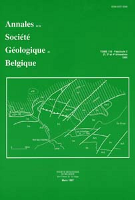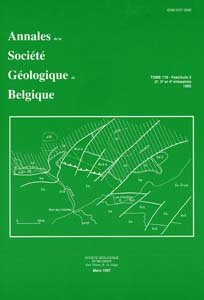- Accueil
- Publications spéciales = special publications
- Gisements stratiformes et provinces cuprifères - C...
- Copper mineralization in miogeosynclinal clastics of the Belt Supergroup, northwestern United States
Visualisation(s): 301 (18 ULiège)
Téléchargement(s): 684 (12 ULiège)
Copper mineralization in miogeosynclinal clastics of the Belt Supergroup, northwestern United States

Abstract
The Belt Supergroup is a stack of fine-grained clastic and minor carbonate rocks at least 20 km thick, deposited in an epicontinental basin on the western margin of the Canadian shield in the period about 1 450 to 850 m.yr. (million years) ago. Most of the stack is of shallow-water marine origin, though the lowest exposed rocks include extensive turbidites and the uppermost may contain some fluvial sandstones and conglomerates. The lower third of the stack consists of graywackes and graphitic shales, and the upper two-thirds of red-bed sequences, black shales, and carbonates. The entire stack has been metamorphosed to green-schist or higher facies.
Anomalous copper occurs in almost every Belt formation except the lowest one (Prichard) and in localities scattered throughout the 130 000 km2 of exposed Belt. The copper is principally in chalcocite, bornite, and chalcopyrite that have replaced groundmass and clasts of the host rocks. Highly anomalous copper is found only in green and white beds within the red-bed sequences; no anomalous copper has been found in purple or red (oxidized) beds. Though copper concentrations tend to follow more permeable (coarser) layers, they also cut across the bedding, indicating that the copper has been mobilized and reconcentrated.
Copper of ore grade and quantity has as yet been found only in what are now impermeable white quartzites and siltites of the Revett Formation, in a zone about 30 km wide and 100 km long in northwestern Montana. The structural position of the zone on a post-Revett dome suggests that copper was reconcentrated epigenetically in permeable strata of a structural-stratigraphic trap prior to or during regional metamorphism of the formation.
Pour citer cet article
A propos de : J.E. Harrison
U.S. Geological Survey, Federal Center, Denver, Colo. 80225.





